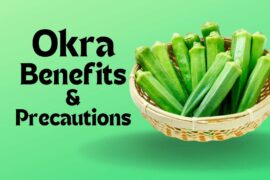There are many kinds of edible oils on the market, and new varieties of edible oils are constantly appearing. Many consumers are dazzled, and various news about edible oil emerge one after another. For example, olive oil is the healthiest; vegetable oil will cause cancer; flaxseed oil is the most nutritious. It makes consumers wonder how to choose.
Common edible oils include soybean oil, rapeseed oil, olive oil, sunflower seed oil, corn oil, flaxseed oil, peanut oil, rice oil, palm oil, camellia seed oil, and various blended oils. In detail, let’s introduce which of these edible oils is good and which is the healthiest. Let’s have a look.
Soybean oil
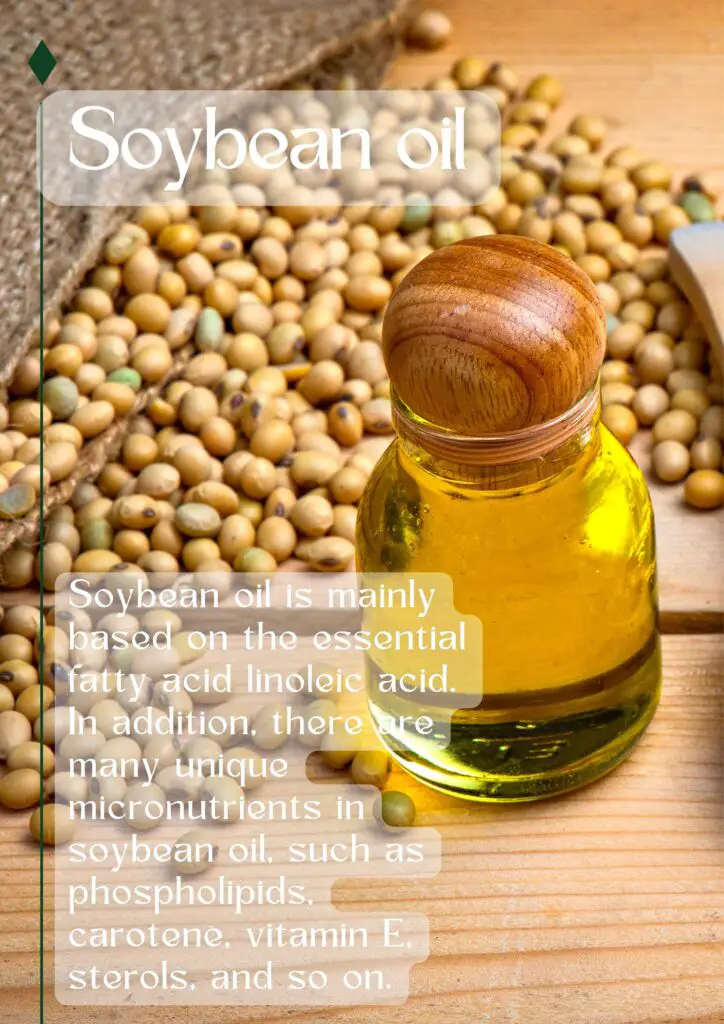
Soybean oil is mainly based on the essential fatty acid linoleic acid ( 50%~60% ), and the content of α – linolenic acid is 5%~9% (the “star fatty acid” that is currently recommended for consumption). In addition, there are many unique micronutrients in soybean oil, such as phospholipids, carotene, vitamin E, sterols, and so on.
The processing of soybean oil will remove some unique nutrients such as phospholipids in the refining process because they will form black substances during cooking. Still, the natural antioxidant vitamin E is well retained to ensure the excellent oxidation stability of soybean oil.
Overall view – Soybean oil is very suitable for stewing.
Rapeseed oil (Canola oil)
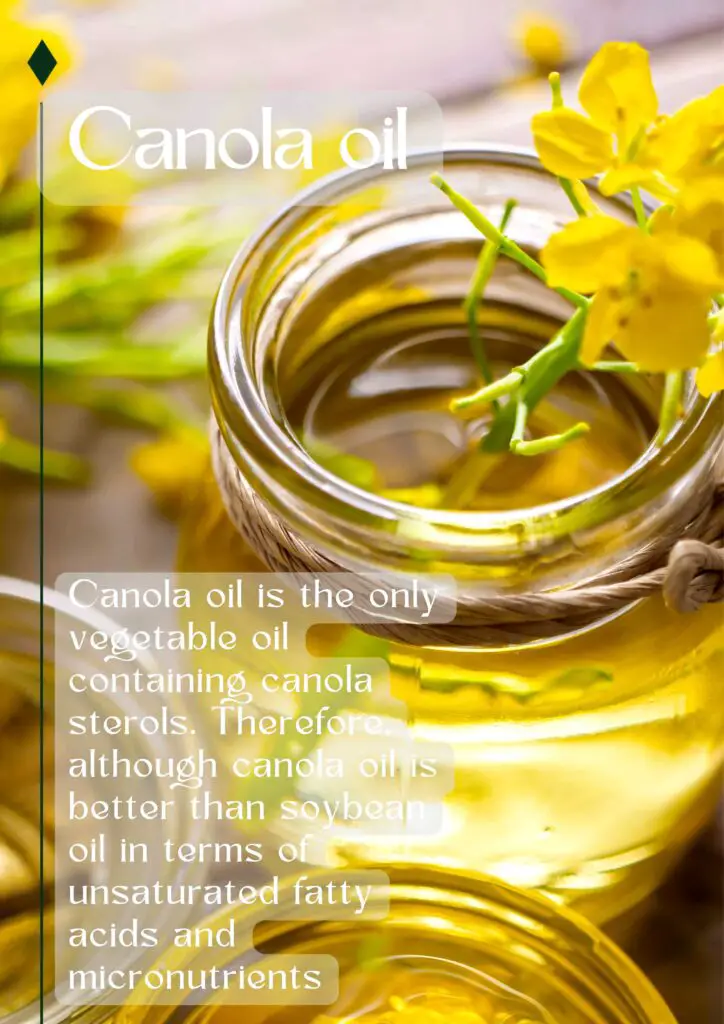
In vegetable oil, the content of polyunsaturated fatty acids in rapeseed oil (canola oil) is in the middle, lower than corn oil, soybean oil, and sunflower oil but significantly higher than olive oil and palm oil.
Although the total amount of vitamin E in micronutrients of rapeseed oil is less than that in soybean oil, the most active α – tocopherol in vitamin E is higher than that in soybean oil.
In addition, rapeseed oil is the only vegetable oil containing rapeseed sterols. Therefore, although rapeseed oil is better than soybean oil in terms of unsaturated fatty acids and micronutrients, the overall nutritional value is slightly discounted because of the unhealthy effects of erucic acid and mustard glucoside in rapeseed oil on the human body.
Overall view – You can use it for cooking, but you should not fry it for a long time.
Peanut oil
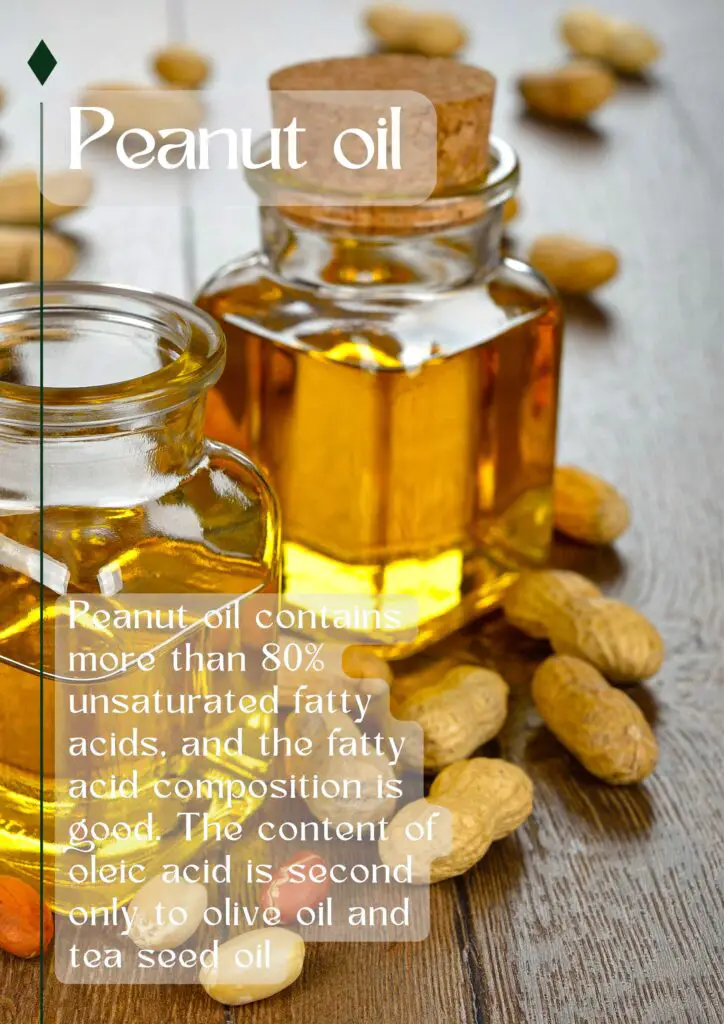
Peanut oil contains more than 80% unsaturated fatty acids (oleic acid 41.2%, linoleic acid 37.6%), and the fatty acid composition is good. The content of oleic acid is second only to olive oil and tea seed oil, which is higher than soybean oil and sunflower seed oil. The disadvantage is the lack of α- Linolenic acid.
A study from the University of Pennsylvania showed that compared with the high-fat diet, olive oil diet, peanut oil diet, and peanut + peanut butter diet could significantly reduce total blood cholesterol and bad cholesterol and have no effect on beneficial cholesterol.
This result also shows that peanut oil can prevent cardiovascular disease almost as much as olive oil.
Overall view – The most homely and delicious cooking oil.
Corn oil
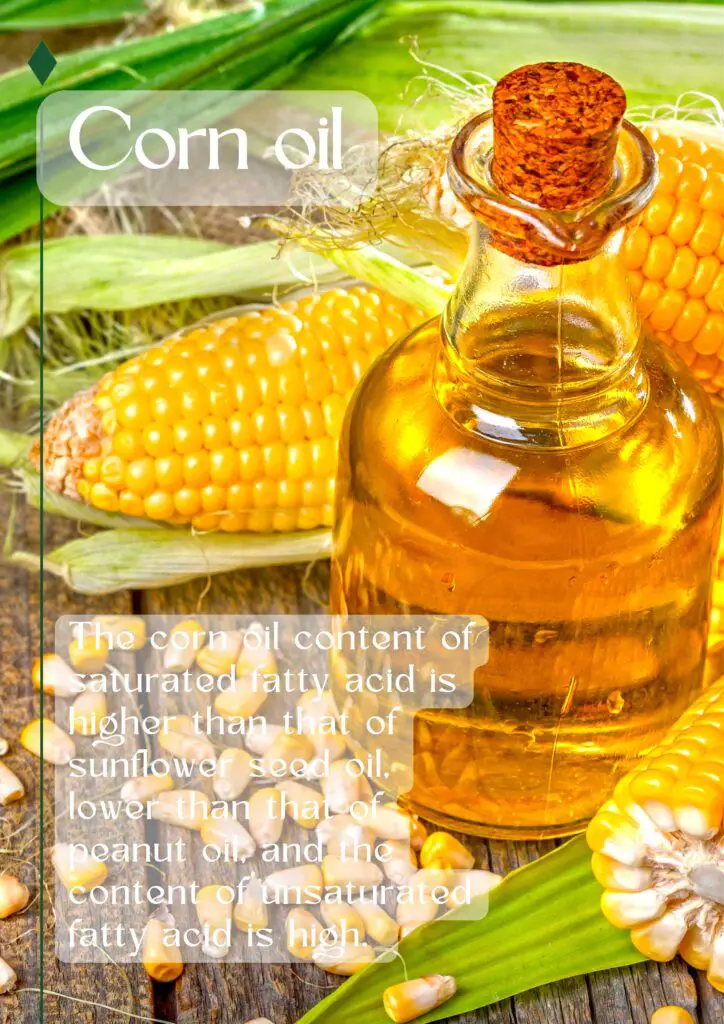
Corn oil comes from corn germ, in which the content of saturated fatty acid is higher than that of sunflower seed oil, lower than that of peanut oil, and the content of unsaturated fatty acid is higher. (mainly linoleic acid, followed by oleic acid)
The nutritional value of corn oil is that it is the source of essential fatty acids and vitamin E and that corn oil are rich in phytosterols, which can reduce the risk of heart disease.
Overall view – Suitable for making salad dressing or salad oil.
Rice oil
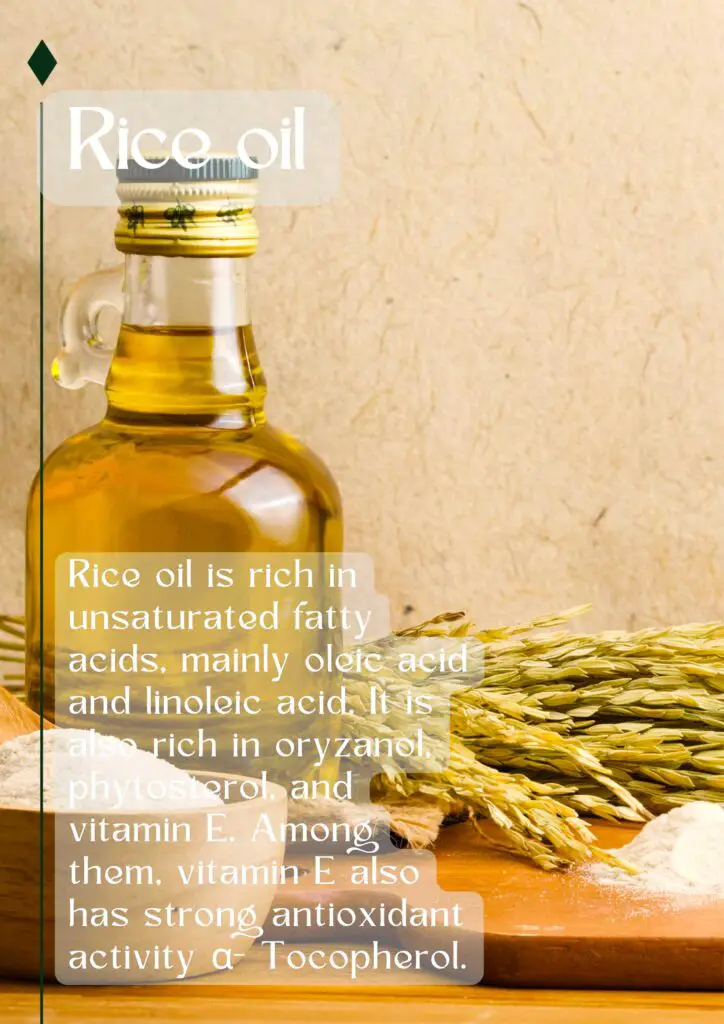
Rice oil was once mixed in rice bran and discarded as waste. Its nutrition is very characteristic. Rice oil is rich in unsaturated fatty acids, mainly oleic acid and linoleic acid. It is also rich in oryzanol, phytosterol, and vitamin E. Among them, vitamin E also has strong antioxidant activity α- Tocopherol. In addition, rice oil also contains 0.3% squalene.
The Fukuoka University of Japan has researched rice oil for people with high blood pressure and diabetes and found that rice oil rich in gluten can improve chronic disease. For the elderly and sub-health population, oryzanol-rich rice oil is a good choice.
Overall view – It is called rice bran oil, and its health value is not “bran” at all.
Olive oil
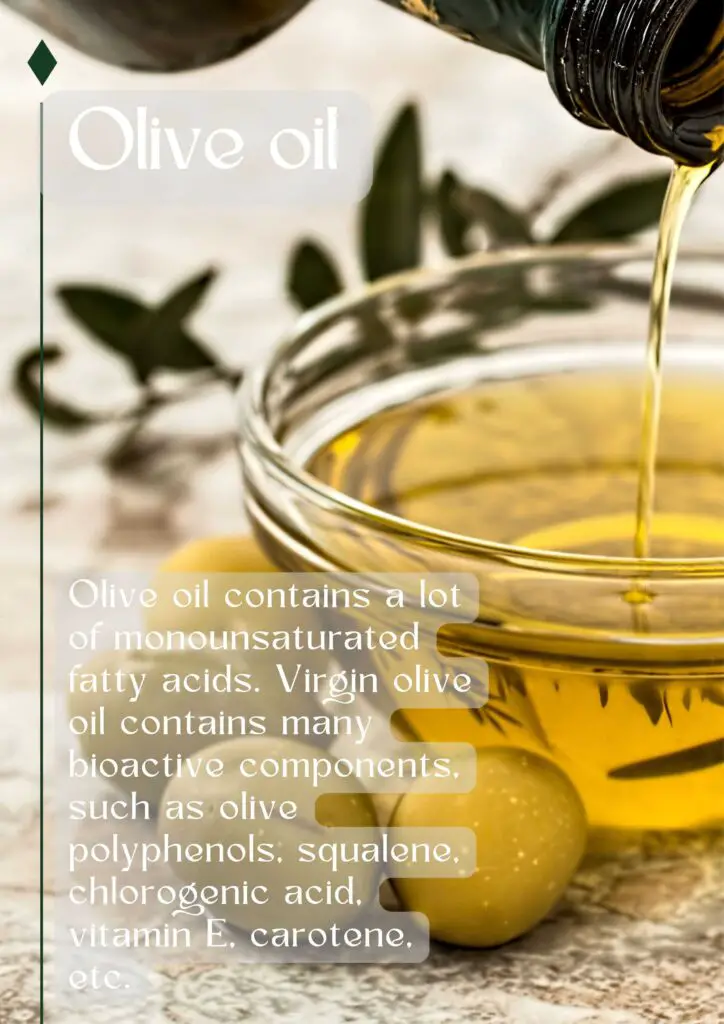
Olive oil contains a lot of monounsaturated fatty acids. Virgin olive oil contains many bioactive components, such as olive polyphenols, squalene, chlorogenic acid, vitamin E, carotene, etc. It has good antioxidant and free radical scavenging ability.
In particular, phenolic compounds have some beneficial effects on human health. For example, squalene in olive oil can protect breast cell DNA from oxidative damage.
You can use olive oil not only for cold mixing but also for all kinds of frying. But extra virgin olive oil is more suitable for cold mixing. You can use it to make the sauce, take it orally directly, and butter replace to spread on bread.
Overall view – When cooking with virgin olive oil, I’m afraid you’re reluctant to put more just to achieve less oil.
Palm oil
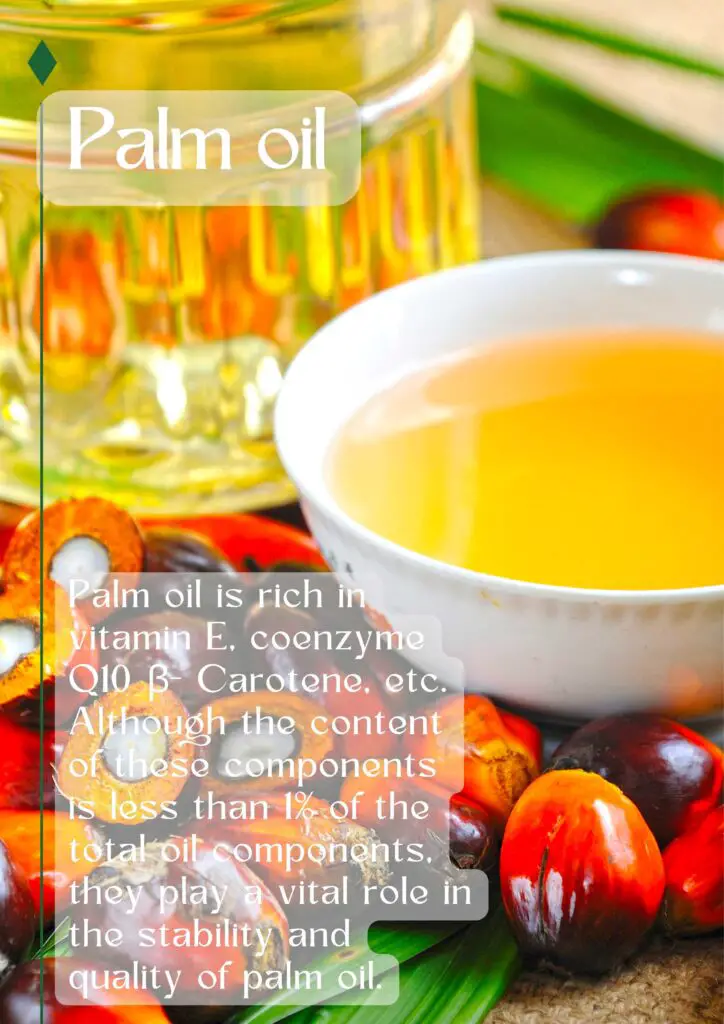
Although palm oil, unlike other vegetable oils, often appears in the kitchen, it occupies a place in the food industry, such as instant noodles, fast food, and baking. With its high oxidation stability and frying resistance, it is often used to replace animal oil without the trouble of cholesterol.
Meanwhile, palm oil is rich in vitamin E, coenzyme Q10 β- Carotene, etc. Although the content of these components is less than 1% of the total oil components, they play a vital role in the stability and quality of palm oil. In particular, carotene and vitamin E, these components make palm oil have antioxidant and other health properties.
Overall view – If you can’t put the delicious fried food, use palm oil.
Camellia oil
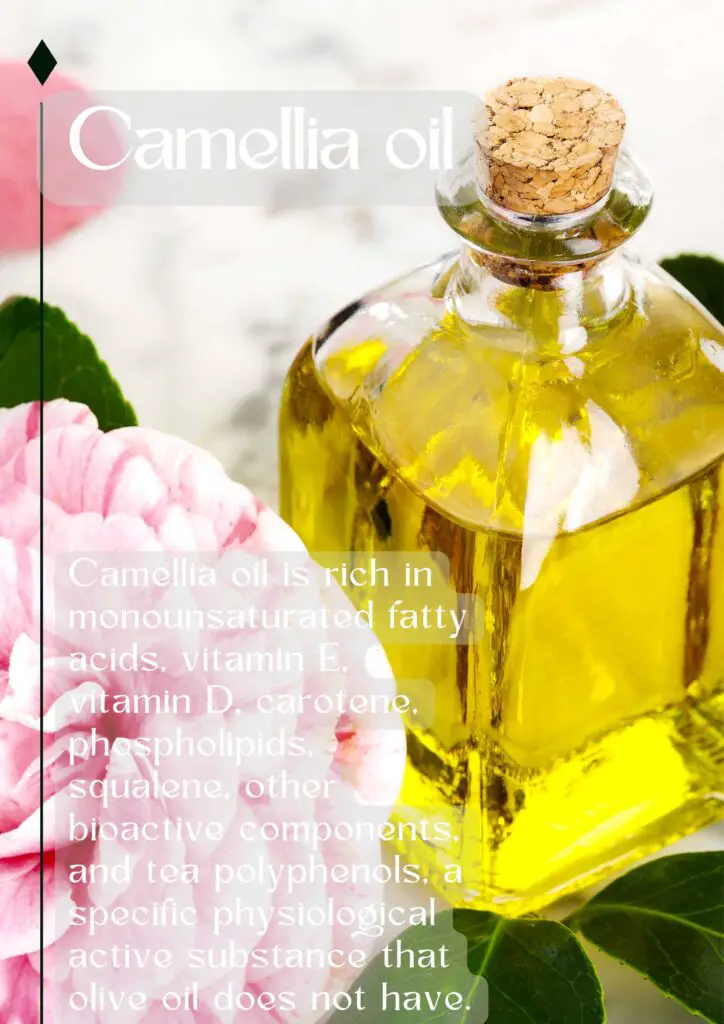
Camellia seed oil and olive oil are called sister flowers, which are one of the two most prominent woody vegetable oils in the world. The monounsaturated fatty acid content of Camellia oil is higher than that of olive oil, which is known as “Oriental olive oil.”
Camellia oil is rich in monounsaturated fatty acids, vitamin E, vitamin D, carotene, phospholipids, squalene, other bioactive components, and tea polyphenols, a specific physiological active substance that olive oil does not have.
At the same time, Camellia oil does not contain erucic acid, which is easy for human digestion and absorption. It helps to reduce the concentration of cholesterol in the blood and prevent cardiovascular diseases such as arteriosclerosis, hypertension, and coronary heart disease.
Overall view – Compared with olive oil, camellia oil is cheap and good in quality.
Flaxseed oil
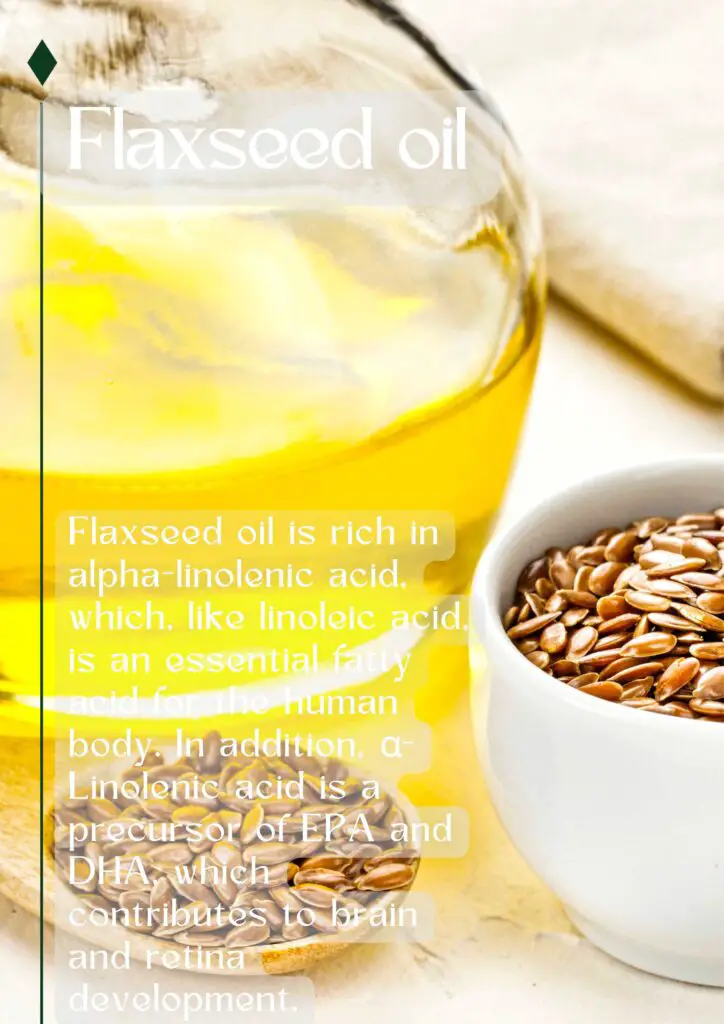
Flaxseed oil is rich in alpha-linolenic acid, which, like linoleic acid, is an essential fatty acid for the human body. In addition, α- Linolenic acid is a precursor of EPA and DHA, which contributes to brain and retina development.
Studies have shown that daily intake of 8g α- Linseed oil of linolenic acid can reduce the blood pressure level of patients with dyslipidemia. In addition, studies have shown that the increase in α- Linolenic acid can reduce the risk of death from coronary heart disease.
However, because the iodine price of flaxseed oil is as high as 175, it is easy to oxidize and deteriorate by air, so it needs to be stored at a low temperature. Therefore, flaxseed oil is not suitable to heat when eating and eat it as soon as possible after opening the cover.
Overall view – Flaxseed oil can only be cooked at low temperatures and mixed with daily edible oil. It is very delicious.
Sunflower seed oil
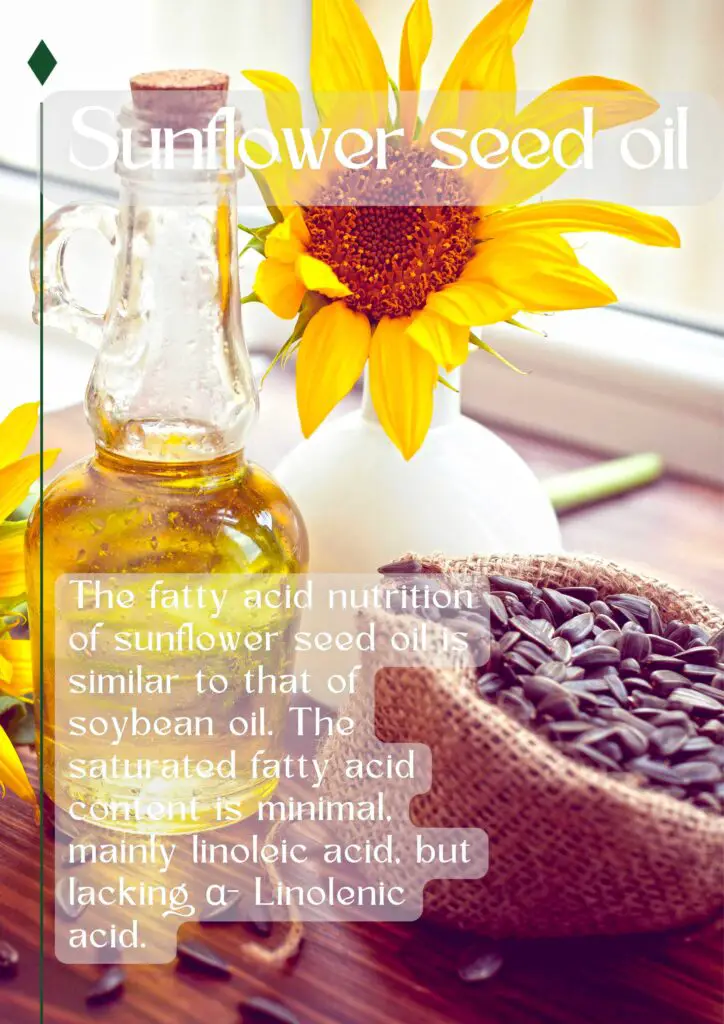
The fatty acid nutrition of sunflower seed oil is similar to that of soybean oil. The saturated fatty acid content is minimal, mainly linoleic acid, but lacking α- Linolenic acid. The tocopherol content in sunflower seed oil is rich, and more than 95% of it is a bioactive alpha-Tocopherol is unmatched by other vegetable oils.
The sunflower seed oil also contains active substances such as phytosterols and squalene. In addition to frying and cooking, you can also use it for baking.
Overall view – Sometimes the flavor is really good when you eat it differently.
Blended oil
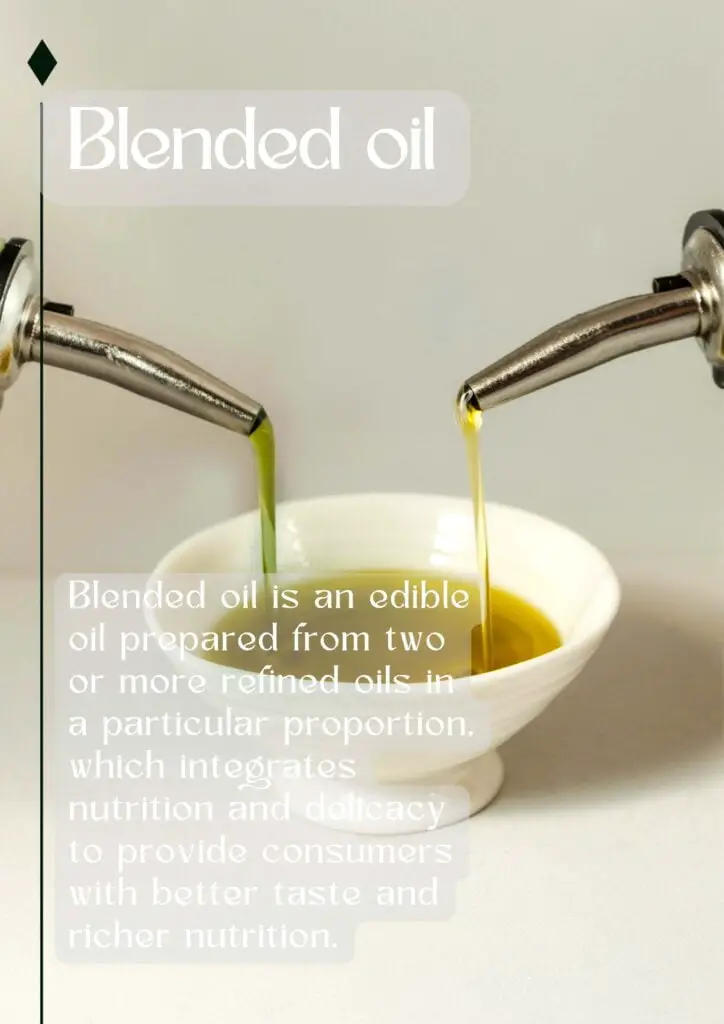
Blended oil is an edible oil prepared from two or more refined oils in a particular proportion, which integrates nutrition and delicacy to provide consumers with better taste and richer nutrition.
Overall view – Suitable for daily cooking.
What oil is used for different cookings
Salad
Soybean oil, flaxseed oil, wheat germ oil, olive oil, and sesame oil:
This kind of oil is the best choice for cold salad and salad because, in this way, it can retain the nutritional elements more fully, and the taste is delicious.
Daily cooking
Rapeseed oil, peanut oil, camellia oil, and rice oil:
These oils have good thermal stability and are suitable for daily cooking.
High-temperature frying
Palm oil, coconut oil, butter:
This kind of oil has good heat resistance and is suitable for cooking and frying.
Stew in soup
Sesame oil, refined olive oil, soybean oil, corn oil, and sunflower seed oil:
You don’t need to put a lot of oil in the soup, just a little sesame oil; Refined olive oil, soybean oil, corn oil, sunflower seed oil, and other low unsaturation oils are most suitable for stewing.
Precautions for household edible oil
Edible oil should not be heated to smoke
No matter what kind of oil is used, the cooking oil temperature should not be too high. It will deteriorate when heated to smoke for vegetable oil, resulting in some aldehydes and ketones that are unfavorable to the human body. Therefore, it is unnecessary to heat the oil to a high temperature.
Fried no more than three times
Generally, when frying things at home, it is recommended not to use a pot of oil more than three times. Edible oil is easy to deteriorate when it is cold and hot, and the food made by frying more times is carcinogenic.
Don’t burn the oil
Burnt oil is easy to produce peroxide, which is harmful to health.
Edible oil should be stored in a cool and dry place
Edible vegetable oil has “four fears”:
- Direct light
- Air
- High temperature
- Water
Therefore, you should protect the preservation of edible oil from light, sealed, low temperature, and waterproofing. Tighten the cover after each use to reduce the contact time with air.
Do not pour the used oil into the crude oil bottle
If the used oil is poured into the crude oil bottle, the oil is easy to deteriorate.

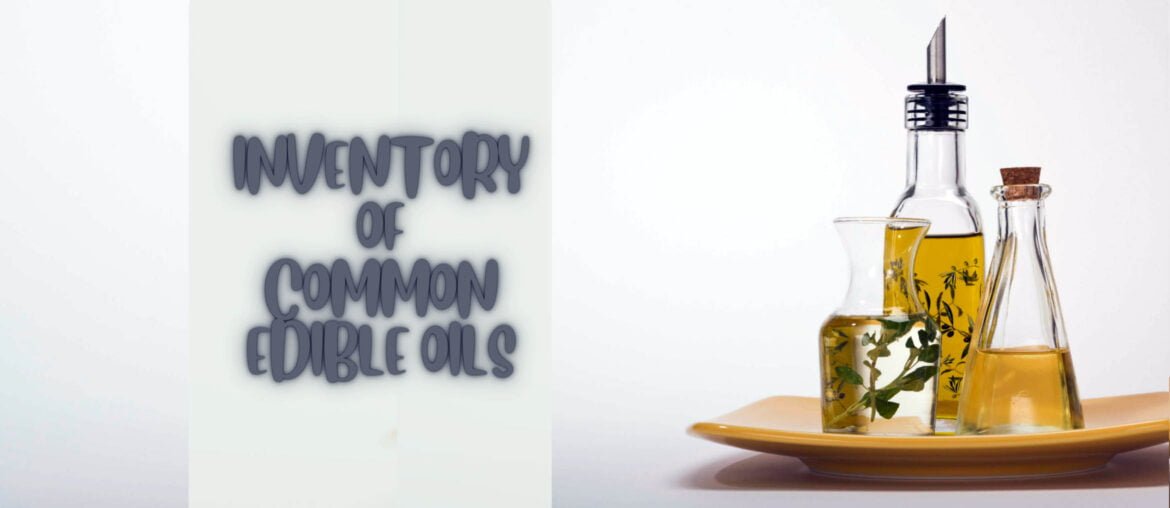
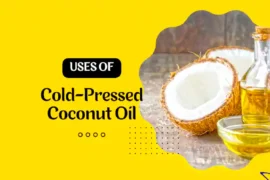
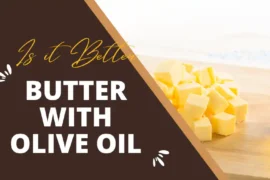
![Interesting Facts About Kiwi Fruit [Bet You Don’t Know Many] Interesting facts about kiwi fruit](https://www.stethostalk.com/wp-content/uploads/2022/11/Interesting-facts-about-kiwi-fruit-270x180.webp)


